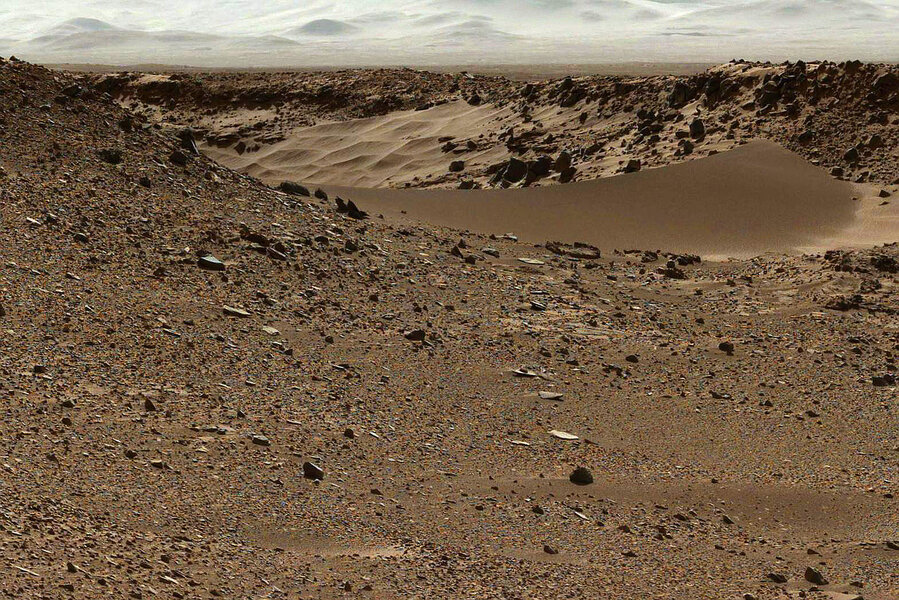Yeeeehaw! Mars Rover Curiosity considering jumping sand dune.
Loading...
Will Curiosity bounce across Mars like a dune buggy?
The SUV-sized rover is considering climbing up and over a sand dune as it heads toward Mount Sharp, its long-term destination.The dune is about three feet tall, and it's steep enough to present a challenge to the SUV-sized rover.
Despite the risks inherent in climbing the sand dune, Curiosity's drivers think this presents a better path than scrabbling across the sharp rocks on either side of the dune, which could poke holes in Curiosity's aluminum wheels.
Curiosity's wheels have taken a beating in the last few months, report NASA engineers, prompting them to pick paths a little more cautiously and check the wheels more often. This dune appears to guard a small gap, dubbed "Dingo Gap" by the Curiosity team, that could offer a smooth path to Mount Sharp and "KMS-9," another appealing science target.
"At KMS-9, we see three terrain types exposed and a relatively dust-free surface," science team collaborator Katie Stack said in a press release.
"This area is appealing because we can see terrain units unlike any that Curiosity has visited so far," says Ms. Stack, a grad student at CalTech. "One unit has striations all oriented in a similar direction. Another is smooth, without striations. We don't know yet what they are. The big draw is exploration and seeing new things."
KMS-9 is about half a mile away from Curiosity, as the Martian crow flies, but considerably farther by any of the possible routes the Curiosity team is considering.
The team spotted Dingo Gap in pictures taken from an orbiting camera, NASA's High Resolution Imaging Science Experiment (HiRISE).
"We'll take a peek over the dune into the valley immediately to the west to see whether the terrain looks as good as the analysis of orbital images implies," said Jim Erickson, project manager for Curiosity based at NASA's Jet Propulsion Laboratory (JPL).
To prepare for the daunting climb up Mount Sharp, engineers have been using Curiosity's twin, left behind at JPL, to check the rover's ability to tolerate slight slippage on slopes while using its drill. With the drill bit in a rock, tests simulating slips of up to about 2 inches have not caused damage.
"These tests are building confidence for operations we are likely to use when Curiosity is on the slopes of Mount Sharp," said JPL's Daniel Limonadi, systems engineering leader for surface sampling with the rover's arm.
Other testing at JPL is evaluating possible driving techniques that might help reduce the rate of wheel punctures, such as driving backwards or using four-wheel drive instead of six-wheel drive. They are testing the theory that some wheel damage may result from the rear wheels shoving the middle or front wheels against sharp rocks, rather than simply the weight of the rover driving over the rocks.
"An analogy is when you are rolling your wheeled luggage over a curb, you can feel the difference between trying to push it over the curb or pull it over the curb," said JPL's Richard Rainen, mechanical engineering team leader for Curiosity.
Curiosity's team is planning to put in long hours, adding in some weekend and evening shifts in February, as they work to evaluate the best routes and driving techniques for Curiosity.
--
You can follow Liz on Twitter: https://twitter.com/lizzyfuller.








